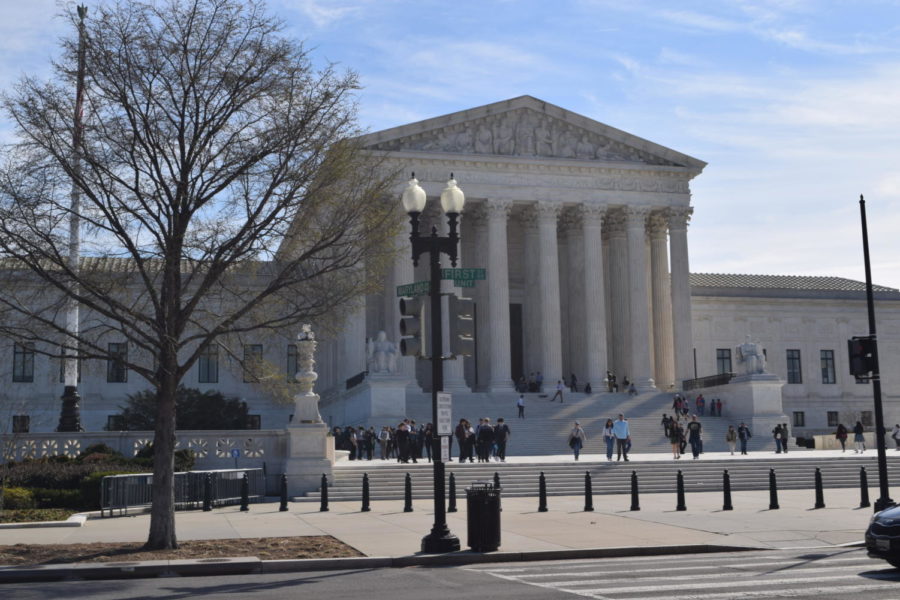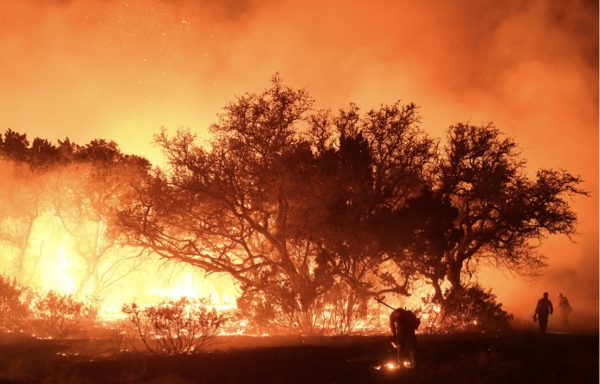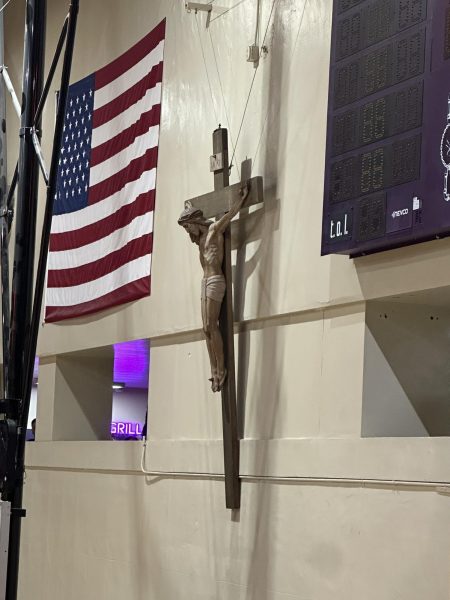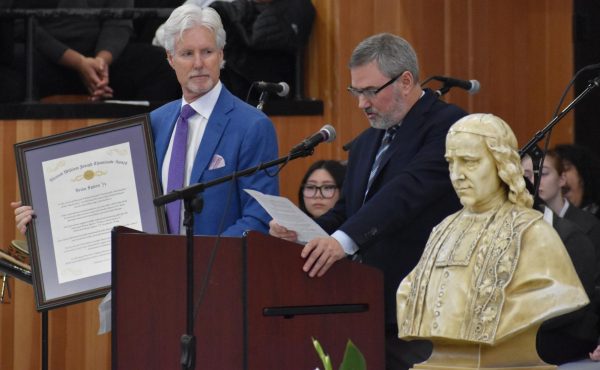SCOTUS overturns Roe v. Wade
The Supreme Court building is where the nine justices make decision regarding the Constitution. They rule on about 80 cases a year.
October 25, 2022
In an unprecedented decision, on June 24, the Supreme Court voted 5-4 to overturn the landmark Roe v. Wade.
Roe v. Wade, established in 1973, asserted that restrictive state regulation of abortion was unconstitutional. The decision was based on the Due Process Clause of the 14th Amendment, which guarantees a fundamental “right to privacy”- in this case, the privacy to make medical decisions.
The ruling has protected women’s right to an abortion for 49 years. However, the rulinghas faced repeated challenges from pro-life groups and conservative legislators, which narrowed the scope of Roe v. Wade without fully overturning it.
That is, until May 2021. The Supreme Court agreed to hear a case regarding a Mississippi state law that banned abortions after the 15th week of pregnancy. Mississippi lawmakers passed the law in the hopes that legal challenges would eventually bring the law to the Supreme Court-controlled by a 6-3 conservative majority. This case would be known as Dobbs v. Jackson Women’s Health Organization.
In May 2022, a draft of a majority opinion intending to overturn Roe v. Wade andPlanned Parenthood v. Casey, written by Justice Samuel Alito, was leaked by Politico. The impending decision had significantly bolstered the confidence and efforts of pro-life groupsworking to restrict or ban abortion in states.
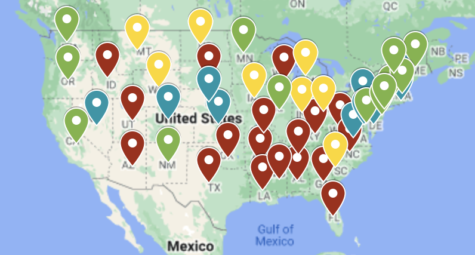
As expected, a month later Roe v. Wade was overturned in a 5-4 decision. Mississippi’s abortion ban was upheld in a 6-3 decision.
In regards to how the decision might impact the upcoming midterms, India Bowles ’23,an AP US Government student, said “…. Tensions between conservative states and liberal states will continue to rise heading into midterms as candidates must secure votes by running on a platform of pro or anti Roe…. This topic has the potential to become voters’ main priority in choosing their candidate and will have a massive impact on the elected politicians for the upcoming midterms.”
Grace Ingersoll, a history teacher, observed that “… in general, a lot of attention is given to the legislative branch [Congress] of our federal government… But I think this ruling in particular is shifting attention to the [Court] and highlighting the power that it holds.”
In the majority opinion, Justice Samuel Alito writes that “The Constitution makes no express reference to a right to obtain an abortion… The Court finds that the right to abortion is not deeply rooted in the Nation’s history and tradition… Roe was egregiously wrong from the start.”
Alito adheres to a legal philosophy known as “original intent,” which involves interpreting the Constitution with the same intent the original writers had in mind during the era in which it was written.
In the dissenting opinion, it’s written that “…the Court struck a balance [in regards to Roe v. Wade], as it often does when values and goals compete… in thus safeguarding each woman’s reproductive freedom, the Constitution also protected “[t]he ability of women to participate equally in [this Nation’s] economic and social life… But no longer.”
The dissenting justices are living constitutionalists, who believe that constitutional law and its interpretation should evolve with current circumstances and values.
The ruling was met with jubilation from pro-life groups. Pro-lifers believe that the fetus is a person with a life. As such, abortion is murder and ought to be banned. For many, this belief originates from their Christian faith. (Christianity is specified because other religions have different teachings regarding abortion.) The Vatican and US Bishops have praised the decision, calling it “an opportunity to reflect on life.”
In official Catholic Doctrine, the Catechism of the Catholic Church states: “Since the first century the Church has affirmed the moral evil of every procured abortion. This teaching has not changed and remains unchangeable. Direct abortion, that is to say, abortion willed either as an end or a means, is gravely contrary to the moral law.”
However, not only Christians commemorate the decision. Some Americans believe states should have the power to regulate such matters and see the ruling as an expansion of freedom.
Conversely, the decision has sparked an explosion of anger and protests from pro-choice groups. Pro-choicers believe that women should have the choice to terminate or continue with the pregnancy, without undue government involvement.
In response to the decision, in an official statement published by whitehouse.gov, President Joe Biden said, “[Roe was] a decision with broad national consensus that most
Americans of faiths and backgrounds found acceptable and that had been the law of the land for most of the lifetime of Americans today.”
The World Health Organization has also criticized the decision, saying it puts women’s lives and health at risk. In regards to the potential implications of Roe’s overturn, according to Legal Aid, “although the majority opinion states that “[n]othing in this opinion should be understood to cast doubt on precedents that do not concern abortion,” the majority’s eagerness in Dobbs to overturn as significant a precedent as Roe has alarmed other communities whose rights stem from the legal principles underlying Roe.”
Many states are preparing their own legislative responses to the ruling. Fourteen conservative states currently have “trigger laws” in effect (abortion restrictions or bans implemented as soon as Roe was overturned.) Such states include Texas, Oklahoma, Georgia, and Alabama. In contrast, traditionally liberal states such as California, Connecticut, and Vermont have strengthened laws protecting access to abortion. Such states are trying to make themselves readily accessible to those having to travel out of state to terminate pregnancies.
On the federal level with its thinly divided Democratic majority, Congress has been sending mixed signals on what it plans to do. Conservative legislators have been talking about enacting a nationwide ban, with Senator Lindsey Graham proposing a bill that bans abortions after 15 weeks of pregnancy.
However, most in the GOP have been distancing themselves from the bill for fear it would hurt their chances in midterms. Meanwhile, Democrats are trying to pass the Women’s Health Protection Act. It essentially aims to do what Roe did before, only this time through Congressional decree. Neither bill has passed.
The overturn of Roe puts women’s healthcare and the power of the Supreme Court on the forefront of America’s political conversations. Being such a landmark and unprecedented decision, it’s clear the Supreme Court won’t be backing down anytime soon. But despite its significance, people on both sides of the political aisles are looking to the future of post-Roe as the bigger question rings clear in America’s mind: What comes next?


